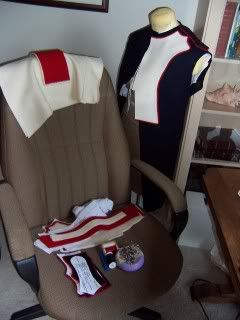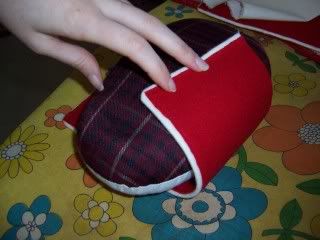Smells like Wet Sheep

I'v been working on the Infantry coat, and I am almost done with all of the fiddly bits now! Except for finishing the edging on the collar I am almost ready to start putting the various pieces together.


The pieces are just stuck on (not sewn) but you can start to get the idea of how that will turn into this: http://www.militaryheritage.com/frenchuniforms.htm

Almost every edge of this coat is raw felted wool, stitched to an edging of a contrast color. (The color and placement denoting rank) For most of these pieces I hand basted the edging to the top piece, pinned on the bottom, then machine stitched through all layers (Then ironed with LOTS of steam). If it got a little messy on the back it didn't matter (for this coat) because all of the pockets are false and going to be stitched closed anyway. The pattern instructions were geared towards hand-sewing, so I had to make a few modifications here and there. One thing it recommended was to use a lighter weight wool for the edging. I had really wanted to do this (makes a cleaner edge and corner) but couldn't find a matching scarlet wool.
The buttonholes were just the basic ones from my embroidery machine. The three decorative ones on the front however I made-up my combining a buttonhole with an embroidery stitch. Since these three are traditionally non-functional, I thought it would be nice to dress them up a bit. The middle one got a bit bowed, I think I might re-do it.

Taping the shoulder seam was what the pattern recommended as stabilizer; I stitched in the ditch.

One thing I love about this wool is it's very mold-able. From what I can tell, it is not completely felted, it still has a bit of bias stretch, and reacts very well to shaping by hand or with the iron. For example I steamed the cuffs over my ham and now they have a nice curve to them.
I hope to finish the collar tomorrow, as well as assemble the sleeve/lining/cuff/placket all together. This will be slowed somewhat by having to work on a skirt for my aunt, but I think it's all doable. Oh, I also have to cut all of the edging for the outer edge/tails of the coat. Mind you, It's not in the directions anywhere to cut it, or sew it in. But it is in the cover illustration and in all the historical references I can find, good thing I was paying attention.